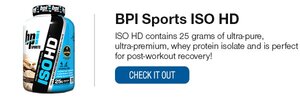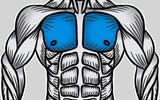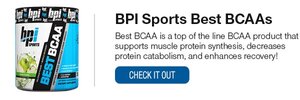01dragonslayer
Ripped
- Jacked Cash
- 495,845
Building a big chest is just about every gym goer’s primary focus at one point or another.
However, most people think that the bench press alone is the best and only movement that really builds big pectorals.
But really, there are other ways you should be training if you really want to achieve head-turning pecs for the beach.
In this article, I’ll discuss some of my top tricks and tips, while diving into the science of building a master chest workout.
Apart from actual lifting techniques and workouts, understanding how the pec muscles are structured and how they relate to movement is essential for stressing certain portions of the pec musculature, based on how you want to grow.

First and foremost, you likely already know that there are different portions of the pectoralis muscle, although it’s a bit different from what you’ve heard. While most people consider there to be an “upper”, “middle”, and “lower chest”, these segments are actually one muscle group named differently due to where they originate1.
The Clavicular head, often considered to be the “upper” chest, originates from the clavicle, and acts to help flex the shoulder and also adduct the shoulder, or move the shoulder towards the middle of the body.
Related: 5 Advanced Arm Workouts Using Proven Scientific Techniques
The Sternal head or “middle and lower” portion of the pec originates from the sternum and also acts to adduct the shoulder. However, it also acts to internally rotate and “extend” the shoulder. To paint a better picture, imagine a baseball pitcher with their arm extended overhead: the sternal head of the pec helps to pull the arm downward and across the body, as during the actual pitch.
Essentially, the different portions of the pec muscle act synergistically to allow for shoulder flexion, extension and rotation, while helping to adduct the shoulder inwards.

For example, as the shoulder flexes more (as in lifting upwards overhead), the clavicular head, or upper portion of the pectoralis muscle becomes shortened. As a result, muscle activation becomes greater for that portion of the muscle than the others.
Essentially, the greater the incline, meaning the more the shoulder is flexed, the greater the activation in the clavicular portion of the pec1.
Alternatively, when the shoulder is extended downwards, such as during a flat bench and even more so during decline movements, the sternal head of the pectoralis becomes shortened to a greater extent than would the clavicular head.
However, it’s important to remember that, during just about any movement targeting the chest musculature, these different portions of the pectoralis muscle are all working. The only difference is that, depending on the angle, certain portions are activated and stretched to a greater extent than others.
If you understand this, you can now see why it’s vital to manipulate movements and angles based on the portions of the pec you’re trying to grow.

So, while a bench press allows you to use a heavy load, it’s not particularly the best movement for specifically targeting the pec musculature.
But again, consider that this idea holds true for just about any muscle group. While compound movements are fantastic for improving functional strength and building multiple muscle groups at the same time, isolation movements also have their place in targeting specific muscles.
Related: Should You Use High Volume or Heavy Weight to Build Muscle?
Therefore, it’s important to have a mixture of both compound and isolation movements in your routine, using varying angles of movement to ensure that you’re maximally stimulating all portions of the pec muscles to the extent needed for growth.
Now, we’ll dive into some advanced workouts targeting the chest musculature using the principles we discussed earlier.
Additionally, the primary focus of this workout is to specifically initiate hypertrophy of the pec musculature.
Keep in mind, however, that other movements will be incorporated due to the limited amount of chest-centric exercises that are optimized for upper chest development.
This technique is essentially like swinging a weighted bat before stepping up to the plate. You’ll start out working up to around 110% of your normal working weight for a repetition or two and then decrease to your normal weight.
Theoretically, using this technique will allow you to lift more weight than you normally would, expediting the growth process2,3.
Rest Pause works by allowing you to take small rest periods within single sets. Essentially, you extend the duration of sets by taking short rest periods, thus significantly increasing volume.
You’ll want to use a normal weight for the recommended reps, around 1 rep short of failure. After completing that set, you’ll rest for 30 seconds or 10 deep breaths. At that point you’ll repeat the process, and then once more afterwards, for a total of three “rest pause sets.” It might look something like this:
Incline dumbbell press: 8 reps
Rest pause is a great technique that has been shown to increase mass, so you definitely want to consider it.
Note: Rest Pause is extremely fatiguing. It’s suggested you account for fatigue and avoid using compound free weight movements like the barbell bench, squat or deadlift, as doing so can become dangerous due to fatigue.
Additionally, there is evidence that by using an antagonist movement before the agonist, you may be able to increase power output on the agonist movement, potentially increasing your chance of growth6.
Give these advanced tips and workouts a try, I guarantee you’ll see major pec gains over the coming months compared to a typical workout plan that just focuses on the basic bench press!
However, most people think that the bench press alone is the best and only movement that really builds big pectorals.
But really, there are other ways you should be training if you really want to achieve head-turning pecs for the beach.
In this article, I’ll discuss some of my top tricks and tips, while diving into the science of building a master chest workout.
Understanding The Chest Musculature
Before getting into specifics regarding training the chest musculature, it’s important to first recognize that there are many different moving parts that play a role in chest development.Apart from actual lifting techniques and workouts, understanding how the pec muscles are structured and how they relate to movement is essential for stressing certain portions of the pec musculature, based on how you want to grow.

First and foremost, you likely already know that there are different portions of the pectoralis muscle, although it’s a bit different from what you’ve heard. While most people consider there to be an “upper”, “middle”, and “lower chest”, these segments are actually one muscle group named differently due to where they originate1.
The Clavicular head, often considered to be the “upper” chest, originates from the clavicle, and acts to help flex the shoulder and also adduct the shoulder, or move the shoulder towards the middle of the body.
Related: 5 Advanced Arm Workouts Using Proven Scientific Techniques
The Sternal head or “middle and lower” portion of the pec originates from the sternum and also acts to adduct the shoulder. However, it also acts to internally rotate and “extend” the shoulder. To paint a better picture, imagine a baseball pitcher with their arm extended overhead: the sternal head of the pec helps to pull the arm downward and across the body, as during the actual pitch.
Essentially, the different portions of the pec muscle act synergistically to allow for shoulder flexion, extension and rotation, while helping to adduct the shoulder inwards.

Angle Matters When Training the Chest
Obviously since there are different segments of the pec musculature with slightly different purposes, it makes sense that the angle of the shoulder relative to the torso will activate certain portions of that muscle group to a greater extent than the other.For example, as the shoulder flexes more (as in lifting upwards overhead), the clavicular head, or upper portion of the pectoralis muscle becomes shortened. As a result, muscle activation becomes greater for that portion of the muscle than the others.
Essentially, the greater the incline, meaning the more the shoulder is flexed, the greater the activation in the clavicular portion of the pec1.
Alternatively, when the shoulder is extended downwards, such as during a flat bench and even more so during decline movements, the sternal head of the pectoralis becomes shortened to a greater extent than would the clavicular head.
However, it’s important to remember that, during just about any movement targeting the chest musculature, these different portions of the pectoralis muscle are all working. The only difference is that, depending on the angle, certain portions are activated and stretched to a greater extent than others.
If you understand this, you can now see why it’s vital to manipulate movements and angles based on the portions of the pec you’re trying to grow.

Compound Chest Exercises vs Isolation Chest Exercises
While most people consider the bench press to be the gold standard for chest training, it’s a compound movement that also relies on many different moving parts and different muscle groups.So, while a bench press allows you to use a heavy load, it’s not particularly the best movement for specifically targeting the pec musculature.
But again, consider that this idea holds true for just about any muscle group. While compound movements are fantastic for improving functional strength and building multiple muscle groups at the same time, isolation movements also have their place in targeting specific muscles.
Related: Should You Use High Volume or Heavy Weight to Build Muscle?
Therefore, it’s important to have a mixture of both compound and isolation movements in your routine, using varying angles of movement to ensure that you’re maximally stimulating all portions of the pec muscles to the extent needed for growth.
Now, we’ll dive into some advanced workouts targeting the chest musculature using the principles we discussed earlier.
Chest Workout 1: Sternal Portion Of Chest Focus
The purpose of this workout is to place primary emphasis on the sternal portion of the pectoralis muscle, while incorporating both compound and isolation movements.Additionally, the primary focus of this workout is to specifically initiate hypertrophy of the pec musculature.
The Workout
| Exercise | Sets | Reps |
|---|---|---|
| 1. Wide Grip Decline Bench Press | 3-5 | 12 |
| 2. Flat Dumbbell Press | 3-5 | 12 |
| 3. Decline Dumbbell Fly | 3-5 | 10 |
| 4. Low Cable Crossover | 3-5 | 15 |
| 5. Chest Press Machine | 3 | Failure |
Chest Workout 2: Clavicular Portion of Chest Focus
The purpose of this workout is to place primary emphasis on the clavicular portion or upper portion of the chest musculature.Keep in mind, however, that other movements will be incorporated due to the limited amount of chest-centric exercises that are optimized for upper chest development.
The Workout
| Exercise | Sets | Reps |
|---|---|---|
| 1. Incline Bench Press | 3-5 | 12 |
| 2. Incline Dumbbell Press | 3-5 | 8 |
| 3. EZ Bar Pullover | 3-5 | 12 |
| 4. Incline Dumbbell Fly | 3-5 | 12 |
| 5. Incline Bench Cable Fly | 3-5 | 15-20 |
Chest Workout 3: Post Activation Potentiation
In this workout, we’ll focus on global improvement, meaning we’ll incorporate both compound and isolation movements, focusing on the full pectoralis muscle. Additionally, we’ll begin incorporating the use of a technique called Post Activation Potentiation (PAP).This technique is essentially like swinging a weighted bat before stepping up to the plate. You’ll start out working up to around 110% of your normal working weight for a repetition or two and then decrease to your normal weight.
Theoretically, using this technique will allow you to lift more weight than you normally would, expediting the growth process2,3.
The Workout
| Exercise | Sets | Reps |
|---|---|---|
| 1. Barbell Bench Press (PAP) | 2 | 2 |
| 2. Bench Press (after PAP) | 3-5 | 8 |
| 3. Incline Dumbbell Press | 3-5 | 12 |
| 4. EZ Bar Pullover | 3-5 | 8 |
| 5. Pec Deck Fly | 3-5 | 15 |
Chest Workout 4: Rest Pause
In this workout, we’ll be incorporating a technique known as rest pause, which is excellent for creating a large amount of metabolic stress as well as mechanical stress4,5.Rest Pause works by allowing you to take small rest periods within single sets. Essentially, you extend the duration of sets by taking short rest periods, thus significantly increasing volume.
You’ll want to use a normal weight for the recommended reps, around 1 rep short of failure. After completing that set, you’ll rest for 30 seconds or 10 deep breaths. At that point you’ll repeat the process, and then once more afterwards, for a total of three “rest pause sets.” It might look something like this:
Incline dumbbell press: 8 reps
- 80 lbs. x 7 reps
- 30 second rest
- 80 lbs. x 4 reps
- 30 second rest
- 80 lbs. x 2 reps.
Rest pause is a great technique that has been shown to increase mass, so you definitely want to consider it.
The Workout
| Exercise | Sets | Reps |
|---|---|---|
| 1. Barbell Bench Press | 3-5 | 6 |
| 2. Incline Dumbbell Press | 3 RP | 8 |
| 3. Incline Dumbbell Fly | 3-5 | 15 |
| 4. High Cable Crossover | 3-5 | 15 |
| 5. Machine Chest Press | 2 RP | 12 |
Chest Workout 5: Antagonist Sets
In this workout, we’ll be including some antagonist movements, such as lat pull downs and seated rows. While these movements are not chest focused, doing so will allow for extra rest between chest movements, which should allow you to have higher energy levels and thus better performance on chest-focused exercises, rather than doing them all back to back.Additionally, there is evidence that by using an antagonist movement before the agonist, you may be able to increase power output on the agonist movement, potentially increasing your chance of growth6.
The Workout
| Exercise | Sets | Reps |
|---|---|---|
| 1. Incline Bench Press | 3-5 | 12 |
| 2. Lat Pull Down | 3 | 15 |
| 3. Decline Dumbbell Press | 3-5 | 10 |
| 4. Seated Cable Row | 3 | 15 |
| 5. Machine Chest Press | 2 RP | 12 |
| 6. Machine Reverse Fly | 3 | 15 |
| 7. Pec Dec Fly | 3 | 15 |
Wrap Up
If you’ve only been working your chest via the bench press, it might be time to start mixing things up. Not only for novelty but if you’re only benching, you might be missing out on chest gains you could obtain by focusing on stimulating other portions of your pecs.Give these advanced tips and workouts a try, I guarantee you’ll see major pec gains over the coming months compared to a typical workout plan that just focuses on the basic bench press!

